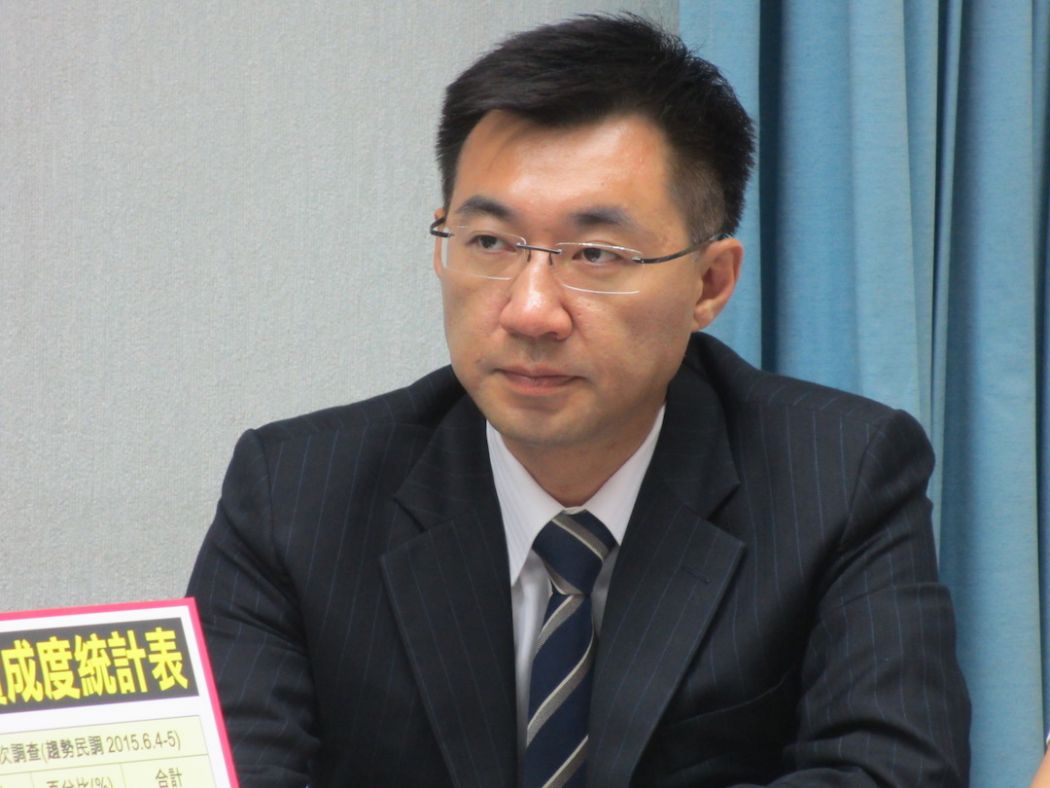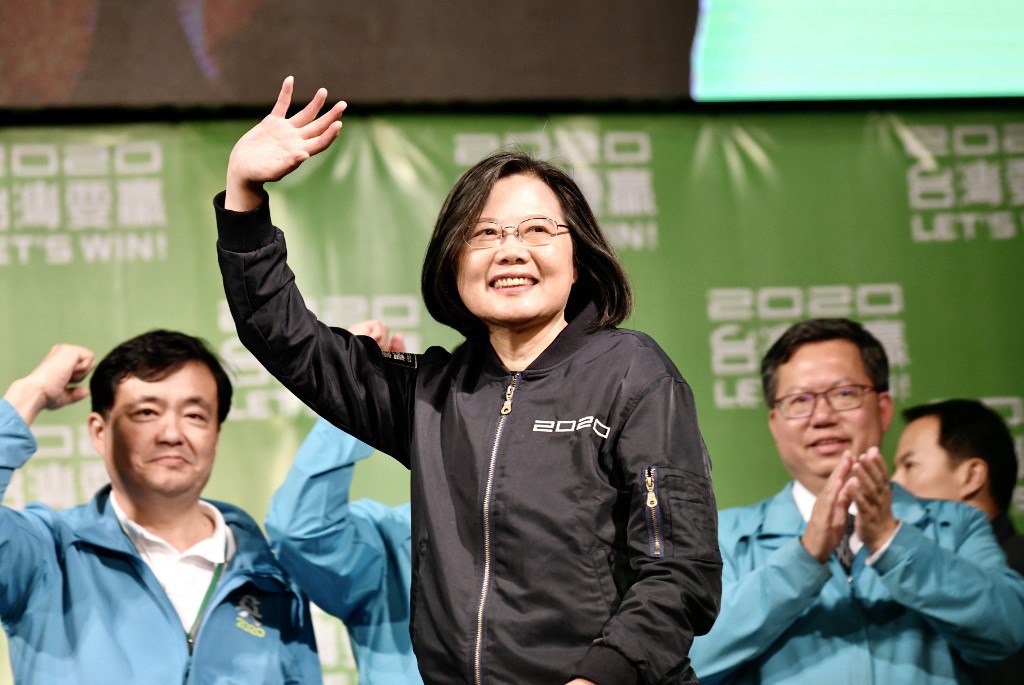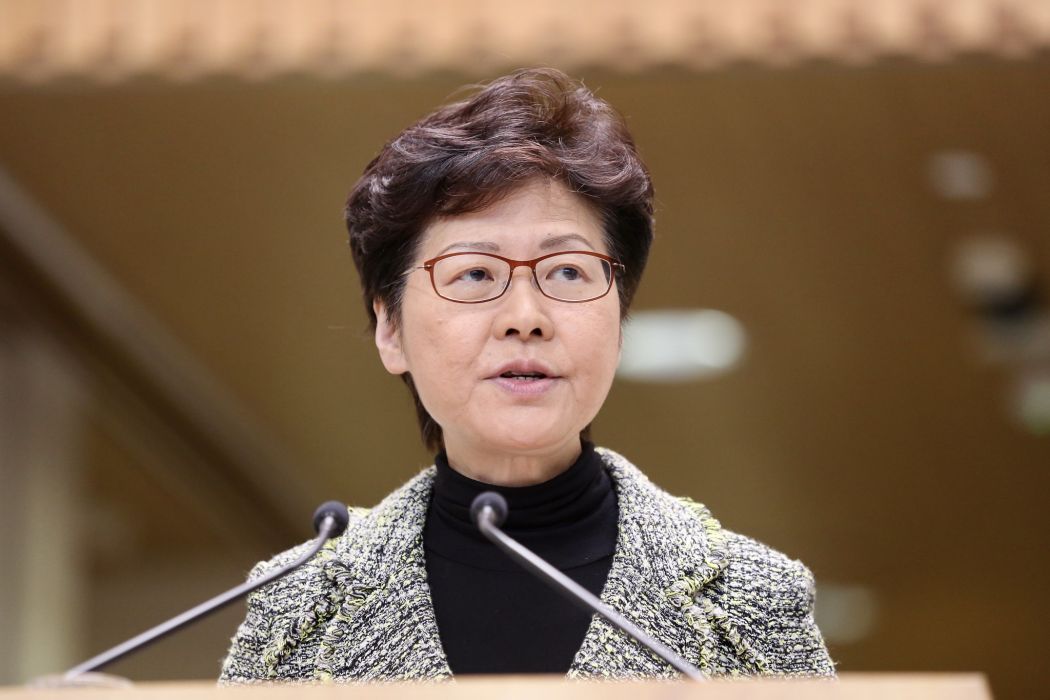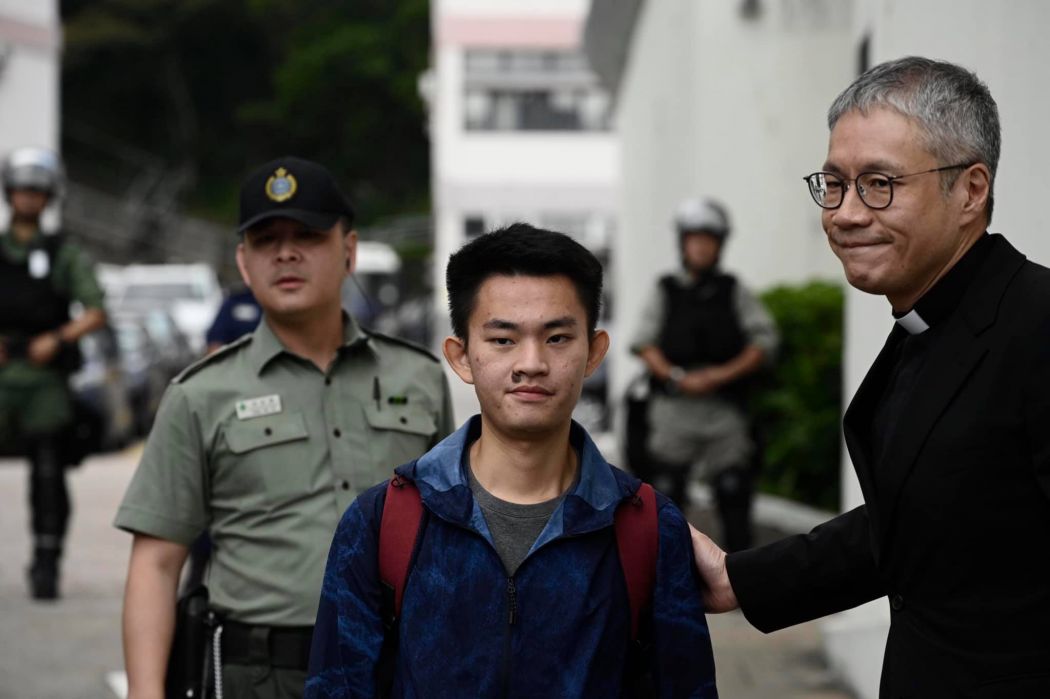In Beijing, paramount leader Xi Jinping must be wondering what further calamities can befall his grand plans for China’s rejuvenation. Hong Kong’s still-unresolved 2019 political insurrection is now being eclipsed by an even greater crisis, also of his government’s making.
The consequences of China’s lax public health standards and obsessive public security concerns have combined to create the current flu epidemic, that began late last year in central China and has since spread throughout the world. But the coronavirus pandemic is only the most spectacular of Xi’s troubles.

Lost in the international glare of collapsing stock markets and quarantined cities are the ongoing reverberations of Hong Kong’s defiance.
Its aftershocks are now threatening to scuttle Xi’s hope of adding Taiwan to the list of China’s reunification accomplishments any time soon, even as the Hong Kong experiment itself seems to be drifting further from his grasp.
Taiwan leadership change
The aftershock that occurred earlier this month was low-key and passed with little fanfare. Taiwan’s long-standing preeminent political force, now in opposition, elected a new leader.
At 48, legislator Johnny Chiang Chi-chen, is the youngest chairman in the history of the century-old Kuomintang (KMT) or Nationalist Party since Chiang Kai-shek began his ascendancy in the 1920s.
Chiang’s victory marks a generational as well as a political shift in the party that lost the mainland in 1949 but went on to dominate Taiwan for the next 40 years. Chiang says he wants to make a reformed KMT stand proud again.
Xi as chairman of the Chinese Communist Party (CCP) chose to ignore the leadership change by not sending the usual congratulatory message. His lapse was not an oversight. The KMT’s new leader had just done the unthinkable at his swearing-in ceremony on March 7, by pledging to re-evaluate the KMT’s China policy.

His more conventional and influential opponent was 67-year-old Hau Lung-bin. He had made similar statements, as have many other party members during the past year. But Chiang emerged as the preferred choice to represent a party no longer dominated by the families of the old guard that fled the mainland’s communist revolution in 1949.
The election was for registered KMT members only. Chiang won over 84,000 votes to Hau’s 38,000.
Despite its past, the KMT has positioned itself in recent decades as the China-friendly option, in contrast to its main rival, the Democratic Progressive Party. The DPP is conventionally characterised as “China-skeptic” and “independence-leaning” due to its roots in Taiwan’s anti-KMT anti-CCP independence movement.
Why would the KMT want to re-think its China-friendly policy? Probably because Chiang’s pledge followed the KMT’s resounding defeat in Taiwan’s last two presidential and legislative elections.
The DPP had just won a landslide victory in a contest that President Tsai Ing-wen had initially been expected to lose. Before Hong Kong and its protests became the centre of attention in 2019, she was on course to be a one-term president, mostly over local issues.

Instead, Tsai was elected for a second term and the DPP retained its majority in Taiwan’s legislative assembly election. Her party won 61 seats, the KMT only 38. The two elections were held simultaneously on the same day, January 11.
And why would Hong Kong’s protests make such a difference to Taiwan voters? Probably because sensitivities there follow from Beijing’s relentless pressure on Taiwan to end the 1945-49 Chinese Civil War once and for all and reunify with the rest of the country.
Two formulas have defined this pressure along the way and both figured in Taiwan’s year-long 2019 election campaign. One is known as the “1992 Consensus.” The other is Hong Kong’s “One Country, Two Systems” governing formula, which Beijing has been trying without success to sell to Taiwan since the late 1970s.
Reunification formulas: the 1992 Consensus
In 1949, China’s national government, then led by Chiang Kai-shek’s KMT, retreated with its defeated forces to the island province of Taiwan. The planned military return to the mainland never materialised and the anti-communist nationalist government remained in its island refuge.

Intermittent hostilities in the Taiwan Strait and attempts at conflict resolution between the two, the CCP and KMT rivals, carried on without result thereafter until Beijing and Taipei finally hit on a means of communicating in the form of the 1992 Consensus.
Despite ongoing difficulties and varying interpretations, the 1992 Consensus remains the basic reference point. It holds that there is “one China” but while the two sides each reserve the right to interpret “one China” in their own way.
Had the KMT remained the only negotiating partner for the Taiwan side, further accommodation might have been reached long ago because the one absolute that the CCP and KMT share in common is their insistence on one China. But neither could abide by the idea of collaborating with the other.
As pressures built in Taiwan for political reform to include native-born Taiwanese, the autocratic KMT government, monopolised by the older generation of mainland transplants and their children, began experimenting with democratic elections.

Taiwan held its first presidential election in 1996. The result was still acceptable to the old veterans because the first elected president, Lee Teng-hui, was both Taiwanese and a member of the KMT. But the second election, in 2000, went to the DPP’s Chen Shui-bian and Beijing has been fulminating about Taiwan independence ever since.
Tsai Ing-wen is especially distrusted in Beijing because she has refused to commit her administration to the 1992 Consensus. In fact, Beijing has never actually endorsed the idea of a separate Taiwan definition for “one China” either. But in order to pressure Tsai’s government, Beijing has retaliated in different ways.
One way has been to ban individual mainland travellers from visiting Taiwan, thereby depriving its economy of their tourist dollars. Another way has been refusal to engage with Tsai’s government in managing matters of mutual interest as they arise, thus making the 1992 Consensus and its concept of one China a precondition for maintaining ordinary cross-Strait relations
Yet the two sides have continued to maintain all the sorts of economic and social ties that China has built with the rest of the world since the big policy shift that followed the death of Mao Zedong in 1976. These are ties that bind too closely, say DPP sceptics, but are welcomed by the China-friendly KMT in the interests of peace and prosperity.

It was those strengthening economic ties, promoted by the KMT government of Ma Ying-jeou, that provoked Taiwan’s youth-driven Sunflower Movement in 2014. Students occupied Taiwan’s legislative assembly building to protest a new trade law.
The protest foreshadowed Hong Kong’s own 2019 rebellion, provoked by a proposed piece of local government legislation, also with cross-border implications.
Chiang Chi-chen addressed these concerns during his KMT leadership campaign. But they were concerns that had emerged during the presidential race itself.
They were about the need to clarify the ambiguities within the 1992 consensus in light of Beijing’s escalating pressure not just for Beijing-centred definitions of the 1992 Consensus, but for Beijing-defined solutions as well.
Reunification formulas: ‘One Country, Two Systems’
Xi placed himself at the forefront of these pressures. In a masterpiece of bad timing that showed just how out of touch he is with political sentiments in the two outlying regions of his domain, Xi began last year with a major speech linking Taiwan and Hong Kong.

Billed as an open letter to Taiwan compatriots, Xi’s speech on January 2, 2019, spelt out the reasons why reunification was inevitable and why Hong Kong’s post-colonial “One Country, Two Systems” governing design was the best of all possible options for Taiwan to adopt.
He also said force would be used to achieve reunification if all else failed and reunification could not be postponed forever. He described Taiwan’s return as a matter of China’s manifest destiny, and an aspect of his vision for national rejuvenation.
The “One China” principle was sacrosanct, deriving from the common national and ethnic identity shared by all compatriots.
Taiwan would enjoy all the rights and privileges Hong Kong had received since its 1997 transfer to Chinese sovereignty. Reunification would entail further deepening of the economic and social integration underway since China’s reform era began in the late 1970s, as the essential route to prosperity for all.
He repeated all the promises Beijing had made to Hong Kong before 1997, about the social system and way of life being retained, along with private property, religious beliefs, and all the “legitimate rights and interests” of Taiwan compatriots.

Xi’s speech was nevertheless devoid of any reference to all the negatives. It contained no mention of the many contradictions that had developed over differing expectations in Hong Kong and interpretations by Beijing that are redefining all the original promises.
These promises were meticulously spelt out in the Basic Law, which serves as Hong Kong’s governing constitution. But it contains a vague 50 year cut-off date that has yet to be explained, even as the 2047 deadline draws nearer.
Nor had anyone explained at the start, when Beijing finished drafting Hong Kong’s Basic Law in 1990, or when it came into force in 1997, that for every promise made, the Basic Law contained a loophole or opt-out clause that gives Hong Kong leaders, at Beijing’s behest, the incentive and power to override it.
And when all else fails, the Standing Committee of the National People Congress in Beijing steps in “with the force of nine imperial tripods.”
Election year impact
In Taiwan, President Tsai had actually preempted Xi’s 2019 message with a New Year’s Day speech of her own. She said Taiwan must be careful to avoid over-dependence on investment and trade with the mainland and be alert to its siren-song of vague political promises.

The next day, after Xi’s open letter, she issued another statement. In it she rejected his offer of a Hong Kong-style “One Country, Two Systems” model for a reunified Taiwan, saying Taiwan would never accept it.
She also said Xi’s speech explained why she had never accepted the 1992 Consensus because, as Xi had now openly admitted, it would be tantamount to Taiwan sharing Hong Kong’s fate. It means one country as defined by Beijing and under its control. She called on Beijing to reform its own system first if it wanted to impress Taiwan.
Tsai’s poll numbers began trending upward soon after the January 2019 New Year messages and carried on in her favour while she parried critics on all sides. They included pro-independence hardliners in her own party as well as one-China KMT veterans and business people in search of a moderate middle way.
In June, Hong Kong’s resistance moved into high gear and the latest angry upsurge actually had a Taiwan link. If only Hong Kong’s Chief Executive Carrie Lam was as astute a political player as Tsai Ing-wen, the whole anti-extradition law fiasco might have been avoided.
But Lam is a civil servant, trained to obey her sovereign even though, ironically, the extradition bill seems to have been her idea, not that of anyone in Beijing.

Lam claimed her proposal was made on compassionate grounds and to serve the cause of justice. She was responding to the case of a young Hong Kong woman, Poon Hiu-wing, who was murdered while on vacation with her boyfriend, Chan Tong-kai, in February 2018. The pair had travelled to Taiwan for a holiday and Chan was arrested soon after returning to Hong Kong.
But Lam’s proposal did not just address the lack of a Hong Kong-Taiwan extradition agreement. She proposed an omnibus bill to cover all jurisdictions with which Hong Kong still lacked such arrangements, including mainland China.
Many thousands of Hong Kongers routinely cross the border for work, study, and travel. They also have a well-informed understanding of the hazards involved, should they fall into the hands of mainland law enforcement.
Later both she and her advisers professed surprise after discovering that so many Hongkongers were so afraid of finding themselves at its mercy, suggesting just how little she knew either about the mainland’s system of justice or the concerns of those she presumed to govern.
But even after the June protests escalated into violence, Lam, in one memorable interview, equated the resistance with naughty children. She suggested they would later thank her for having sorted them out and forced passage of the extradition bill through a reluctant Legislative Council.

She finally withdrew the bill in early September, but by then it was too late. Protests had escalated into a citywide anti-government insurrection.
A local election was held on November 24, in the midst of the chaos. Voters nevertheless turned out in record numbers.
But they did not vote against the violence that was continuing all around, disrupting public transport, closing universities, and vandalising business establishments. Candidates who endorsed the protests and remained silent on the violence were rewarded by voters with an unprecedented landslide victory.
Many Hong Kong protesters fled to Taiwan seeking sanctuary from expected arrest and Hong Kong protest events were closely followed there. When campaigning for Taiwan’s January 2020 presidential election began in earnest, Tsai Ing-wen’s KMT opponent Han Kuo-yu was making much of his China-friendly credentials.
He broke with convention and travelled to China in March, including making visits to Hong Kong and Macau. He was welcomed by officials with open arms everywhere he went.
But as campaigning wore on and his poll numbers continued to slide, Han became more circumspect. He said he didn’t understand why people were casting him in a pro-China light.
By June, he was saying the ” One Country, Two Systems” design was not for Taiwan. If he was elected, he promised, the formula would be accepted only over his dead body.
All of a sudden, Taiwan’s pro-unification politicians are distancing themselves away from “One Country, Two Systems.” Here’s Kaohsiung mayor Han Kuo-yu promising voters that One Country, Two Systems will never be materialized in #Taiwan, unless some “step over his dead body.” https://t.co/2H1V6dzNMn
— William Yang (@WilliamYang120) June 16, 2019
For the result of all Taiwan’s 2020 elections, Xi has no one to blame but himself, and Carrie Lam. Had he not chosen to make so forceful a pitch for Hong Kong-style reunification in his January 2, 2019, speech, and had Lam not insisted on passage of her extradition bill, Tsai’s victory would probably not have been so great, nor Hong Kong’s protests so violent.
But Taiwan’s resistance and Hong Kong’s defiance in the face of his aggressive reunification and integration strategies would have continued all the same.
